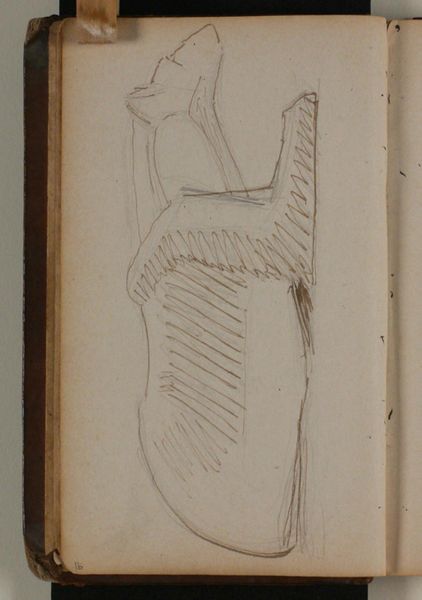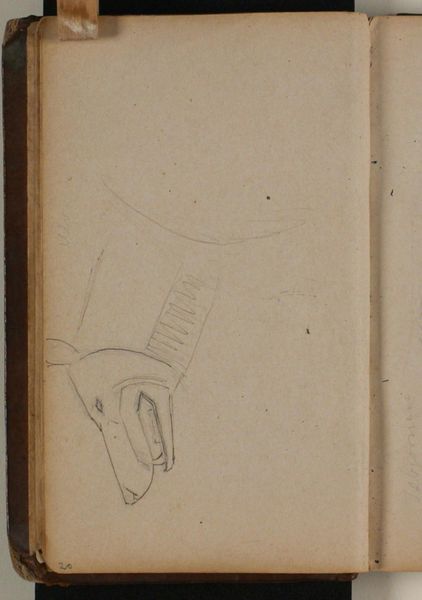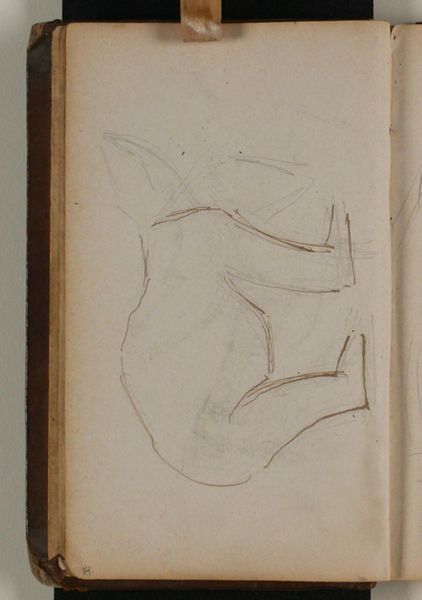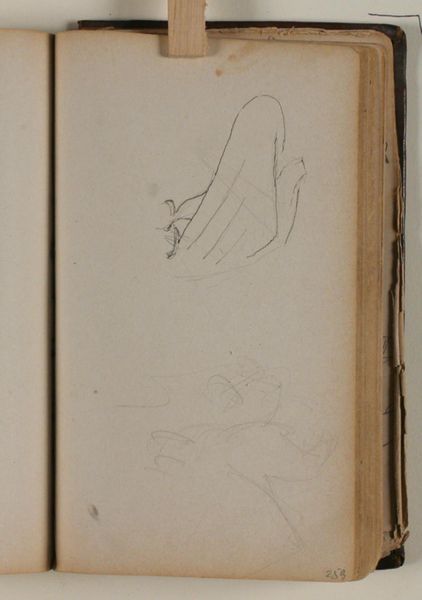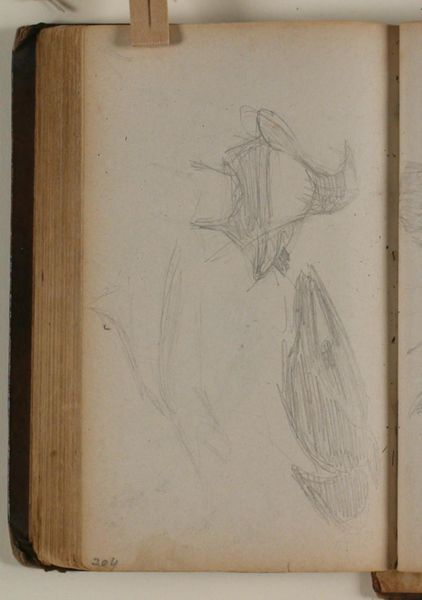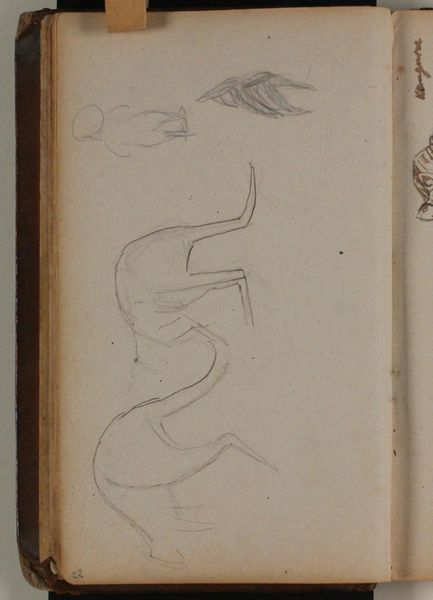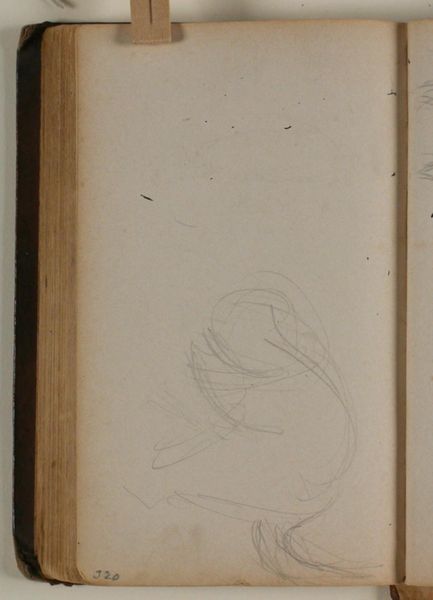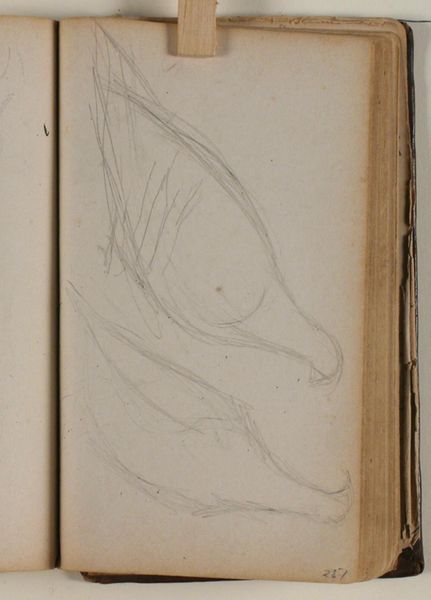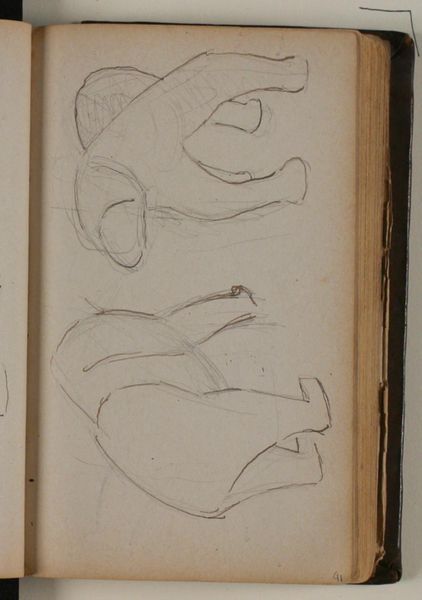
drawing, paper, pencil, graphite
#
drawing
#
figuration
#
paper
#
coloured pencil
#
pencil
#
graphite
Dimensions: 162 mm (height) x 98 mm (width) x 23 mm (depth) (monteringsmaal)
Curator: Here we have Niels Larsen Stevns’s "Liggende hund", which translates to "Lying Dog", a drawing made sometime between 1864 and 1941. The work makes use of pencil, graphite and colored pencil on paper, and is part of the collection at the SMK, the National Gallery of Denmark. Editor: There's a kind of hesitant quality to the line, almost as if Stevns were feeling out the form more than depicting it with certainty. You get a sense of a brief moment captured, an observation. The dog is abstracted but somehow evocative in its position. Curator: Indeed, the quick sketch possesses symbolic weight when considered through the ages old image of the dog, often connected with fidelity and vigilance. We, as humans, anthropomorphize our connection with domestic animals and read qualities that serve as a reflection of ourselves. Editor: Semiotically speaking, it’s interesting how the sparse lines manage to suggest a posture so clearly recognizable as relaxation or sleep. The slight curve of the body, the tucked paws – minimal yet effective signifiers. Note also how the slight smudging enhances that suggestion. Curator: The visual cues immediately trigger that sense of calm for us, associating the reclining dog with a sense of home and security. Whether intentional or not, that symbol of faithfulness creates an instant bridge of communication and recognition across generations of dog lovers. Editor: I find myself intrigued by the way the shading is applied almost haphazardly. It’s not photorealistic in any way, which creates a sense of movement. We see a dog as it shifts in sleep or perhaps anticipation of waking. It’s lively despite the subject's repose. Curator: Exactly, there is more here than initially meets the eye. By understanding the rich tapestry of animal symbolism that permeates throughout art history and across cultural values, we begin to uncover layers of meaning behind seemingly simple sketches like this one. Editor: Absolutely. Stevns uses just enough information to set up a whole network of signifiers, drawing on shared cultural memory. Ultimately, the piece becomes a space where form and content meet and generate rich interpretations, regardless of when and by whom.
Comments
No comments
Be the first to comment and join the conversation on the ultimate creative platform.


